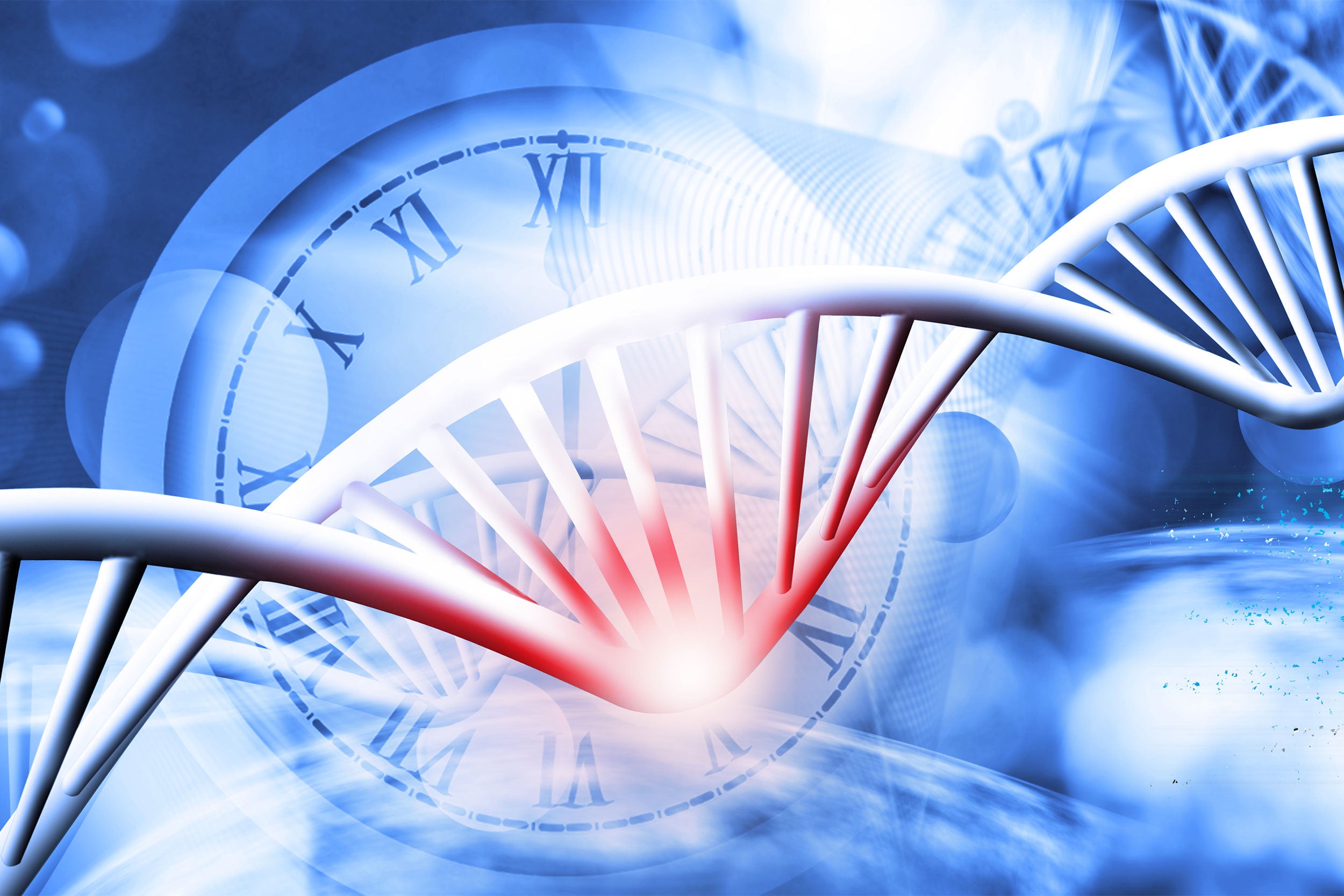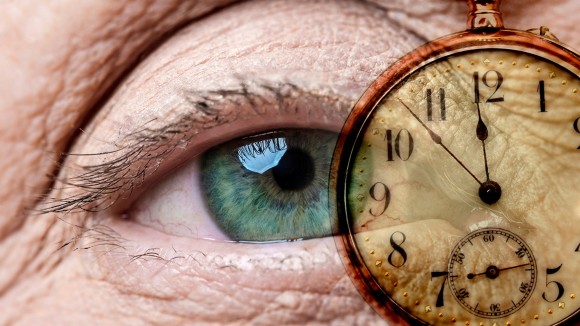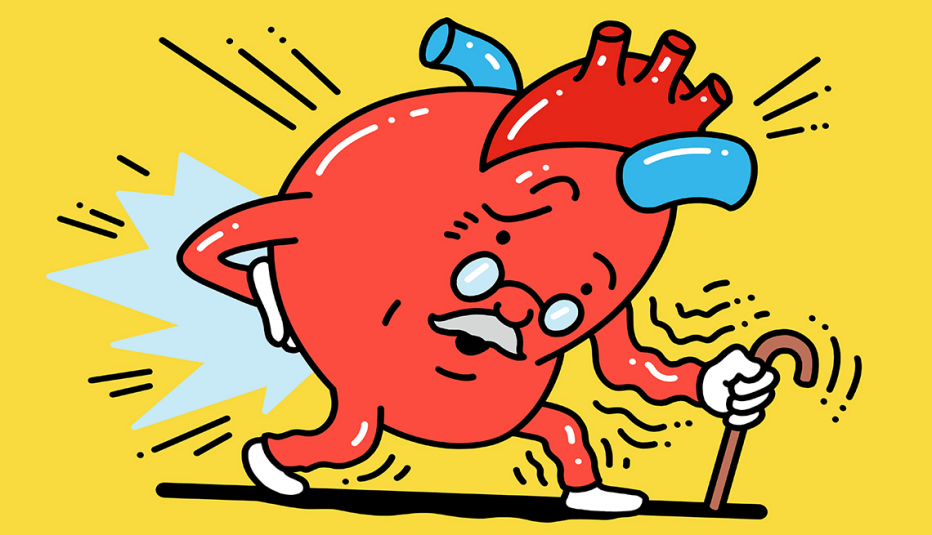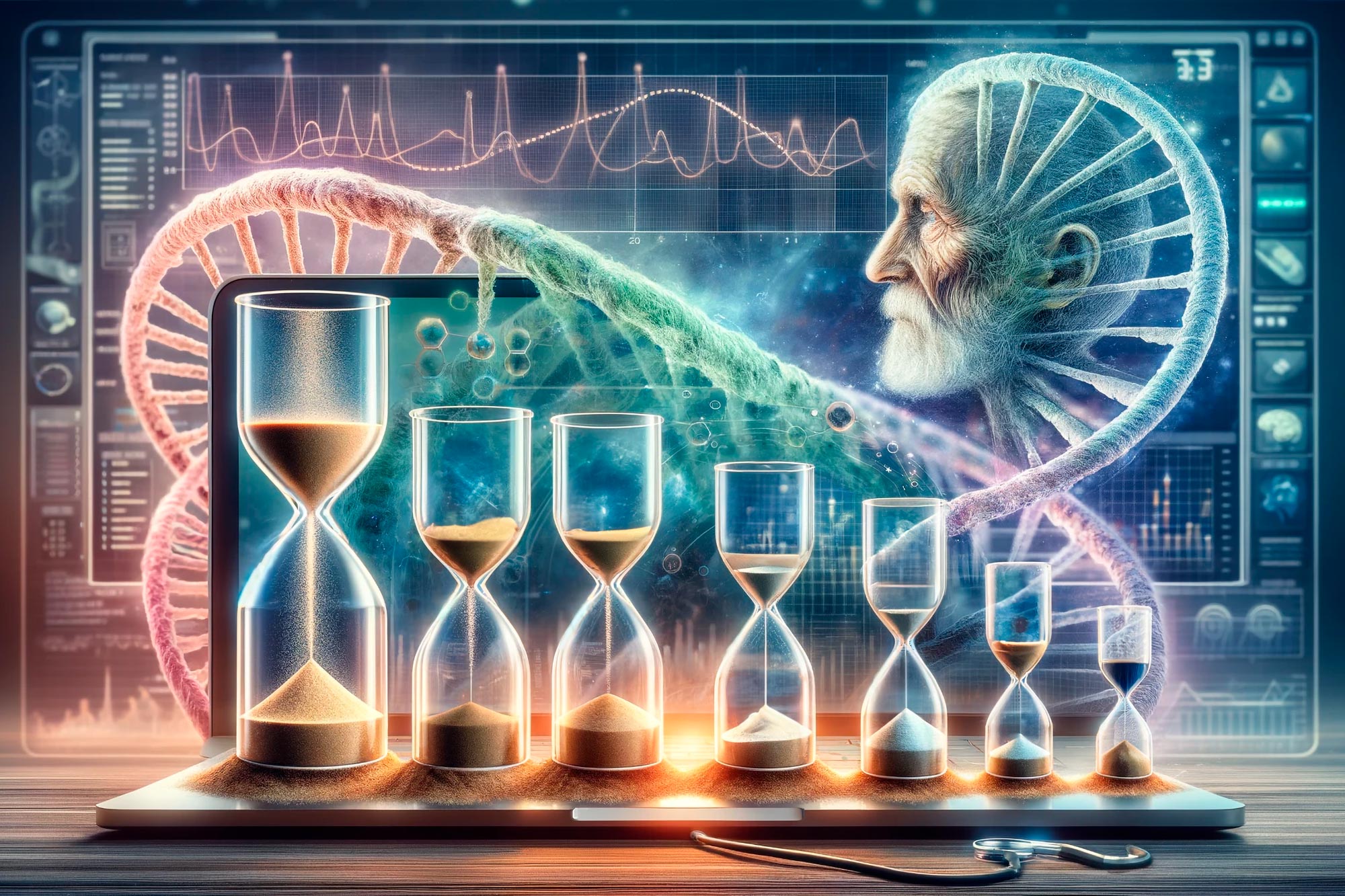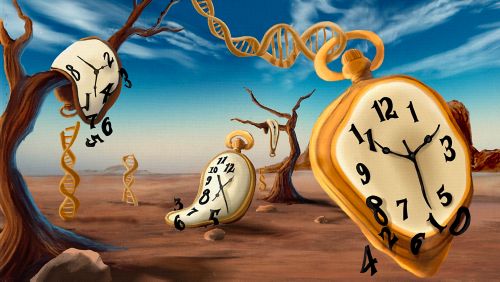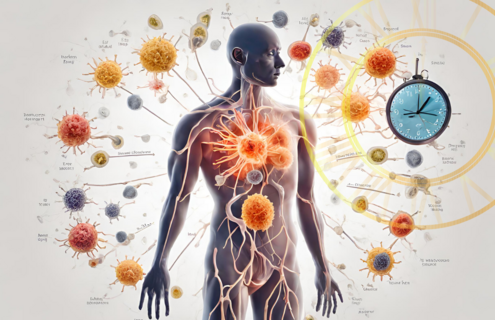The pursuit of longevity has evolved from merely adding years to life toward extending healthspan—the period of vitality, resilience, and purpose. Integrating the insights of Eric Topol, David Sinclair, and Peter Attia, a holistic roadmap emerges: Lifestyle+ habits like exercise, whole-food nutrition, restorative sleep, and meaningful social connection work synergistically with advanced biomedical technologies such as proteomic clocks, epigenetic reprogramming, and AI-driven precision medicine. Environmental exposures, socioeconomic factors, and mental well-being are equally crucial, framing longevity as a multidimensional endeavor. The fusion of low-tech discipline, high-tech monitoring, and high-touch human connection creates a practical, actionable, and equitable framework for living longer, healthier, and more meaningful lives.
ದೈಹಿಕ ಜೀವನವನ್ನು ವಿಸ್ತರಿಸುವುದನ್ನು ಕೇವಲ ವರ್ಷಗಳನ್ನು ಹೆಚ್ಚಿಸುವಂತೆ ನೋಡುವ ಪರಂಪರೆ ಈಗ ಆರೋಗ್ಯದ ಅವಧಿಯನ್ನು (healthspan) ವಿಸ್ತರಿಸುವ ದೃಷ್ಟಿಕೋನಕ್ಕೆ ಮರುಪರಿಗಣಿಸಲಾಗಿದೆ — ಅಂದರೆ ಶಕ್ತಿ, ಪ್ರತಿರೋಧಕ ಶಕ್ತಿ ಮತ್ತು ಉದ್ದೇಶದೊಂದಿಗೆ ಜೀವನವನ್ನು ಬದುಕುವ ಅವಧಿ. ಎರಿಕ್ ಟೋಪೊಲ್, ಡೇವಿಡ್ ಸಿಂಕ್ಲೇರ್ ಮತ್ತು ಪೀಟರ್ ಅಟ್ಟಿಯಾ ಅವರ ತಜ್ಞಜ್ಞಾನಗಳನ್ನು ಒಳಗೊಂಡಂತೆ, ಒಂದು ಸಮಗ್ರ ಮಾರ್ಗದರ್ಶನ ಬೆಳೆಯುತ್ತಿದೆ: Lifestyle+ ಅಭ್ಯಾಸಗಳು — ವ್ಯಾಯಾಮ, ಸಂಪೂರ್ಣ ಆಹಾರಪದಾರ್ಥಗಳ ಆಹಾರ, ಪುನರುಜ್ಜೀವನಗೊಳಿಸುವ ನಿದ್ರೆ, ಮತ್ತು ಅರ್ಥಪೂರ್ಣ ಸಾಮಾಜಿಕ ಸಂಪರ್ಕ — ಪ್ರೊಟಿಯೋಮಿಕ್ ಕ್ಲಾಕ್ಗಳು, ಎಪಿಜೆನೆಟಿಕ್ ರೀಪ್ರೋಗ್ರಾಮಿಂಗ್, AI-ಆಧಾರಿತ ನಿಖರ ವೈದ್ಯಕೀಯಂತಹ ಉನ್ನತ ತಂತ್ರಜ್ಞಾನಗಳೊಂದಿಗೆ ಸಹಕಾರಿಯಾಗುತ್ತವೆ. ಪರಿಸರ ಮಾಲಿನ್ಯ, ಸಾಮಾಜಿಕ-ಆರ್ಥಿಕ ಅಂಶಗಳು ಮತ್ತು ಮಾನಸಿಕ ಉತ್ತಮತೆಗೆ ಕೂಡ ಮಹತ್ವವಿದೆ, ಮತ್ತು ದೀರ್ಘಾಯುಷ್ಯವನ್ನು ಬಹುಮಿತೀಯ ಪ್ರಯತ್ನವಾಗಿ ರೂಪಿಸುತ್ತವೆ. ಕಡಿಮೆ-ತಂತ್ರಜ್ಞಾನ ಕ್ರಮಬದ್ಧತೆ, ಉನ್ನತ-ತಂತ್ರಜ್ಞಾನ ಮೇಲ್ವಿಚಾರಣೆ ಮತ್ತು ಹೃದಯಸ್ಪರ್ಶಿ ಮಾನವ ಸಂಪರ್ಕಗಳ ಸಂಯೋಜನೆಯಿಂದ, ದೀರ್ಘಕಾಲಿಕ, ಆರೋಗ್ಯಕರ ಮತ್ತು ಅರ್ಥಪೂರ್ಣ ಜೀವನವನ್ನು ಬದುಕಲು ಪ್ರಾಯೋಗಿಕ, ಕಾರ್ಯಾತ್ಮಕ ಮತ್ತು ಸಮಾನ ಅವಕಾಶಗಳನ್ನು ಒದಗಿಸುವ ಒಂದು ಚಟುವಟಿಕೆ ರೂಪರೇಖೆ ನಿರ್ಮಿಸಲಾಗುತ್ತದೆ.
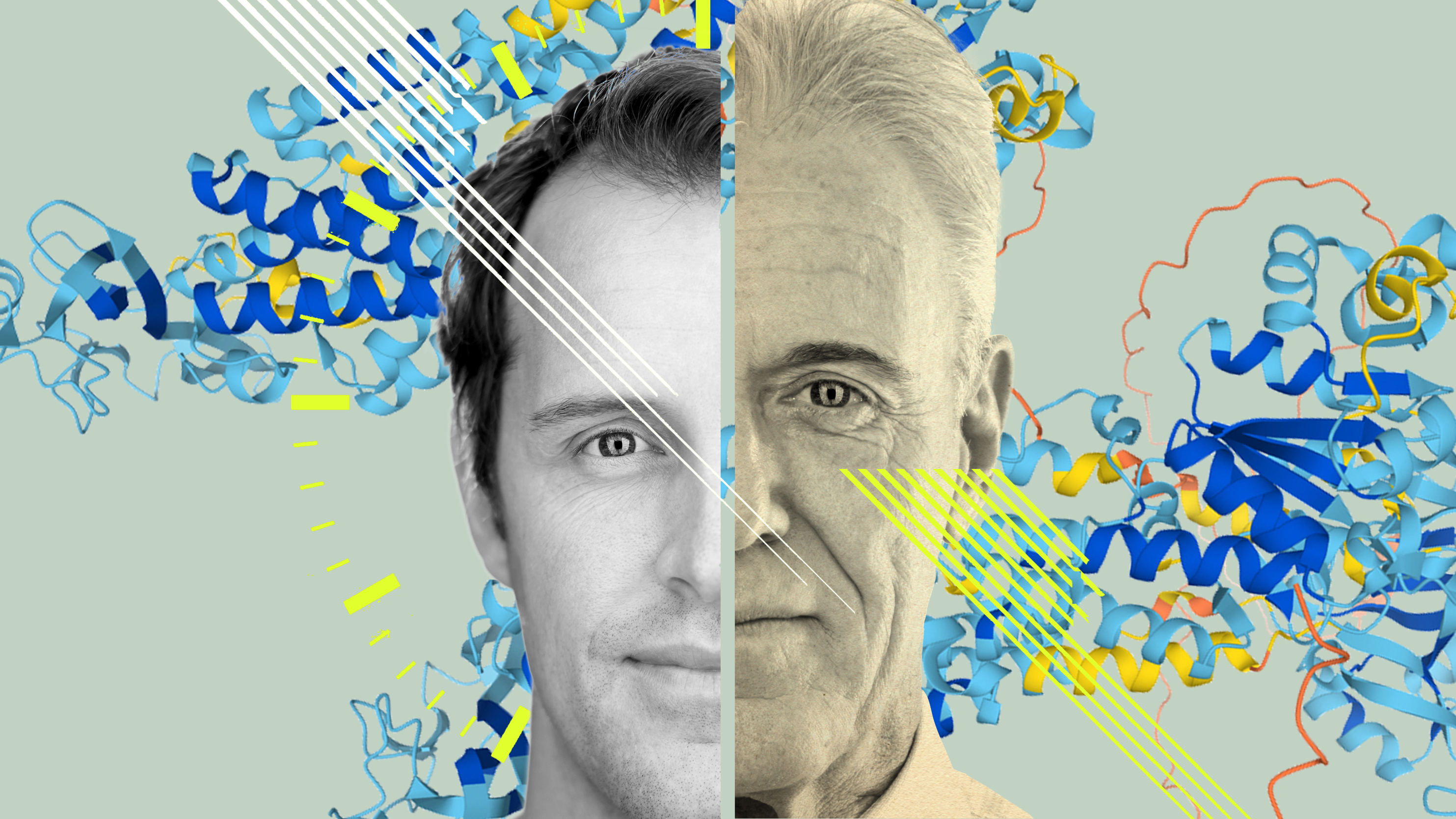
The Science and Soul of Longevity — Lifestyle+, Molecular Rejuvenation, and Precision Health
Intended Audience and Purpose
Audience: General readers, professionals, and social entrepreneurs interested in science-based longevity, healthspan optimization, and the integration of lifestyle, environment, and emerging biomedical technologies.
Purpose: To offer a holistic and evidence-grounded roadmap for extending healthspan (years of functional vitality), bridging the wisdom of daily living with the frontier of genomic, metabolic, and AI-driven innovations.
I. Introduction: Rethinking Longevity — From Adding Years to Adding Life
The goal of longevity is not to live longer—it’s to live better, longer. To sustain clarity, vitality, and purpose deep into what was once called “old age.” The emerging science of longevity is revealing a profound truth: aging is not an inevitable decay, but a programmable and partially reversible process. What was once considered destiny—wrinkles, weakness, forgetfulness—is increasingly viewed as a code we can rewrite through biology, behavior, and belief.
Why this matters:
In an era where medicine has prolonged life but not necessarily improved it, the new conversation on longevity is a moral and social imperative. The rise in chronic disease, cognitive decline, and lifestyle-related mortality has exposed the limits of conventional healthcare. The work of modern pioneers like David Sinclair, Peter Attia, and Eric Topol points toward a future where prevention, personalization, and proactive self-care replace the reactive model of disease management. But to truly extend healthspan, we must integrate not just data and drugs, but discipline, environment, and meaning.
What this section explores:
We are standing at the intersection of ancient wisdom and genomic precision. Scientists are decoding how cells age, while technologists are teaching machines to predict disease before it starts. Yet, longevity is not just a medical question—it’s philosophical. What is a long life worth if it is not lived with joy, connection, and purpose? How do we ensure that the next wave of bio-innovation empowers humanity rather than commodifies it?
The Paradigm Shift: From Lifespan to Healthspan
- The Old Paradigm — “Living Longer at Any Cost”
For most of the 20th century, medical progress was measured by lifespan. Antibiotics, vaccines, and surgical interventions extended life expectancy dramatically—but often without preserving the quality of those added years. The final decades of many lives became dominated by dependency, medication, and institutional care. We extended time, not vitality. - The New Paradigm — “Living Well, Deeply, and Long”
Today, the focus is shifting from years lived to years lived in good health. This reorientation toward healthspan—the period of life spent free from chronic disease and cognitive decline—represents a revolution in both science and mindset.
- David Sinclair, in Lifespan: Why We Age—and Why We Don’t Have To, proposes that aging is a disease—a loss of information at the cellular level that can be slowed, even reversed.
- Peter Attia, in Outlive, reframes health through the lens of proactive prevention, metabolic fitness, and what he calls “Medicine 3.0,” emphasizing early intervention and deep diagnostics over symptomatic treatment.
- Eric Topol, in Super Agers (2025), shows how genetics, AI, and precision medicine are converging to identify individuals who defy the typical aging curve—and how their patterns of resilience can inform all of us.
Together, these thinkers signal a shift from reactive medicine to preventive longevity ecosystems—where continuous monitoring, behavioral science, and AI-driven insight help people make micro-adjustments that extend vitality by decades.
The Cellular Truth: Aging as a Programmable Code
Why we age (and why we may not have to):
Sinclair’s research at Harvard’s Paul F. Glenn Center demonstrates that aging results not simply from cellular damage, but from a loss of epigenetic information—the biological software that tells our genes when to switch on or off. When this software degrades, cells lose identity and function. But astonishingly, this “information loss” can be partially reversed using reprogramming factors that restore youthful gene expression patterns.
Key Mechanisms of Longevity:
- Sirtuins and NAD+: Cellular guardians that repair DNA and regulate metabolism. Boosting NAD+ levels may slow aging and enhance energy efficiency.
- Mitochondrial Health: The “power plants” of cells. Exercise, intermittent fasting, and mitochondrial-targeted therapies preserve their function.
- Autophagy: The body’s internal recycling system. Triggered by fasting and hormetic stress (cold, heat, high-intensity exercise), autophagy clears cellular debris.
- Inflammaging: Chronic, low-grade inflammation that accelerates aging. Managing stress, gut health, and sleep directly modulates this process.
These insights invite a radical reframing: aging is plastic, not fixed. Through a combination of molecular interventions and lifestyle mastery, we can significantly bend the trajectory of decline.
Longevity as a System, Not a Pill
The temptation in modern culture is to look for a miracle molecule—a pill, peptide, or patch. But as Attia emphasizes, longevity is not a product, it’s a practice. It’s the cumulative result of daily systems—nutrition, movement, sleep, emotional balance, and purpose—all working in harmony.
The super-agers that Topol profiles don’t just have rare genes; they live rare lifestyles. They maintain mental agility through constant learning, emotional stability through community, and physical resilience through consistency. In short, they don’t just extend life—they expand capacity.
A Call for an Integrated Longevity Movement
The science is clear, but the social architecture is not yet built. We need longevity ecosystems, not just elite clinics. That means democratizing access to biomonitoring, nutrition literacy, and preventive care. It means teaching children not only how to live, but how to age well.
The challenge is both technological and ethical:
- How do we ensure longevity science serves the collective, not just the wealthy?
- How do we integrate community, purpose, and equity into a field dominated by biohacking individualism?
Aging gracefully in the 21st century must become a collective project, not a luxury pursuit. The true measure of a civilization’s progress will not be how long its richest citizens live—but how meaningfully its poorest can.
Introduction: The Age of Reimagined Aging
A. The Paradigm Shift
- Humanity is not just trying to live longer — it’s learning how to age better.
For centuries, aging was seen as an unalterable march toward decline — a natural law beyond human control. But a revolution in biology and medicine is dismantling that fatalism. Today, scientists view aging not as a fixed destiny but as a modifiable biological process, one that can be measured, influenced, and potentially delayed. The 21st century marks a turning point where we move from extending life to enhancing the quality of life — from simply surviving to thriving across decades. - The old paradigm equated longevity with more years; the new paradigm — led by thinkers like Eric Topol, David Sinclair, and Peter Attia — aims to extend healthspan, the period of vitality free from chronic disease.
Modern longevity science is not about outliving others; it’s about outliving your own limitations. The focus has shifted from mere survival to sustained function, independence, and purpose.
- David Sinclair challenges the notion that aging is inevitable, describing it as a disease of information loss — one that can be slowed, paused, or even reversed.
- Peter Attia reframes medicine as a long-term strategy, where the goal is not to treat illness but to prevent decline decades before symptoms appear.
- Eric Topol emphasizes the role of human adaptability — how behavior, environment, and emotional health shape biological aging.
Together, they call for a redefinition of longevity that integrates scientific rigor with daily discipline, making healthspan not a privilege, but a practice.
- Modern science reframes aging as a biological program that can be slowed, paused, or partially reversed.
Cutting-edge research reveals that aging is not merely wear and tear but a regulated process—driven by cellular pathways that can be tuned.
- Epigenetic “clocks” now measure biological rather than chronological age, offering a new metric for vitality.
- Interventions such as calorie restriction, fasting, cold exposure, and specific molecules like NAD+ boosters and sirtuin activators have shown promise in slowing aging markers in animal and human studies.
- Cellular reprogramming experiments suggest that tissues, even in older organisms, can regain youthful function under the right conditions.
The implication is profound: the biology of aging may be flexible, and how we live — not just what we inherit — determines how we age.
B. The Convergence of Three Revolutions
- Lifestyle+: The cumulative power of behavior, environment, and mindset (Topol).
Eric Topol’s Super Agers (2025) extends the discussion beyond genes and medicine to the habits and environments that sustain exceptional longevity. His research emphasizes that super aging is rarely genetic alone — it is behavioral. Diet, social connection, mental resilience, purpose, and sleep form the architecture of long-term vitality. Topol’s “Lifestyle+” concept integrates mindfulness, movement, and meaning as powerful biological modulators — showing that optimism, curiosity, and community engagement are as potent as molecular therapies in promoting longevity. - Molecular Rejuvenation: The manipulation of aging pathways — epigenetics, sirtuins, NAD+, and cellular reprogramming (Sinclair).
David Sinclair’s groundbreaking work at Harvard reframes aging as epigenetic noise — the gradual loss of cellular memory. By targeting key molecular switches like sirtuins, AMPK, and NAD+ metabolism, Sinclair and others are pioneering ways to “reset” cells to a younger state without losing their identity. His experiments with Yamanaka factors — genetic reprogramming tools — have restored vision in aged mice and rejuvenated tissues, hinting at future therapies that could repair age-related damage from within.
The principle is elegant: aging is not damage accumulation, but information loss, and restoring that information may restore youth. - Preventive Precision Medicine: Proactive, data-driven management of metabolic, cardiovascular, and cognitive health (Attia).
Peter Attia’s Outlive champions a new medical paradigm he calls Medicine 3.0, focused on prevention rather than repair. Using continuous monitoring of biomarkers, VO₂ max, glucose variability, and strength metrics, Attia argues that longevity depends more on strategy than genetics. His model treats aging as a long game — optimizing the “Four Horsemen” of chronic disease: metabolic dysfunction, cardiovascular disease, cancer, and neurodegeneration. Prevention begins decades earlier than we think, guided by data, discipline, and deliberate design. - Together, they redefine longevity as a symphony between biology, behavior, and technology.
Longevity is no longer a question of luck, but of literacy — biological, technological, and emotional. The integration of molecular rejuvenation (Sinclair), precision prevention (Attia), and lifestyle mastery (Topol) creates a new human operating system:
- Biology provides the tools.
- Technology provides the feedback.
- Mindset provides the meaning.
This convergence transforms aging from a biological tragedy into a design challenge — a frontier where science meets self-mastery.
The Biological Architecture of Aging: Why We Age
A. The Hallmarks of Aging (Sinclair’s Framework)
- Epigenetic drift — the loss of gene-expression fidelity over time.
At the heart of aging lies a quiet erosion of order. Over time, our cells begin to lose the precision of their genetic instructions. Genes that should remain silent start to express, while critical ones switch off. This gradual epigenetic drift—changes in how DNA is read and interpreted without altering the code itself—creates biological confusion. It’s as if the body’s internal software begins to misfire, leading to functional decline. - Mitochondrial dysfunction and cellular senescence — cells “forget” their identity.
Mitochondria, the cell’s energy generators, grow less efficient with age, producing more free radicals and less ATP. Simultaneously, some cells enter a zombie-like state called senescence: alive but nonfunctional, secreting inflammatory signals that accelerate nearby aging. Over time, this toxic microenvironment turns vitality into vulnerability. When enough cells “forget” who they are, tissues lose coherence, leading to frailty, organ decline, and disease. - Loss of proteostasis and genomic instability.
Proteins, the workhorses of life, rely on proper folding and recycling to maintain cellular balance. Aging disrupts this proteostasis—misfolded proteins accumulate, overwhelming cellular repair systems and fueling diseases like Alzheimer’s and Parkinson’s. Meanwhile, DNA—the original blueprint—suffers from replication errors and oxidative stress, leading to genomic instability. The cell’s capacity to repair itself declines, making each new copy less faithful to the original. - Sinclair’s thesis: aging is information loss, not just wear-and-tear.
David Sinclair’s most transformative idea reframes aging from a mechanical failure to a data corruption problem. His Information Theory of Aging posits that our cells retain a backup copy of youthful genetic information within their DNA. The problem isn’t that the data is gone—it’s that the system has lost the ability to read it correctly.
- The epigenome, he argues, is like software instructing the hardware (DNA). Over time, environmental stress, toxins, and lifestyle factors introduce “noise” into this system.
- The stunning insight: epigenetic noise is reversible. By restoring clarity to this biological software, cells can regain their youthful function without altering their genetic code.
This is not science fiction — it’s a scientific revolution that turns the inevitability of aging into a biological variable.
B. The Molecular Reset: Reversing the Clock
- Sirtuins, NAD+, and cellular repair pathways can be activated through fasting, exercise, and specific molecules (e.g., NMN, resveratrol).
Sinclair’s research identifies sirtuins—a family of longevity proteins—as master regulators of cellular repair, energy metabolism, and inflammation. They depend on NAD+, a molecule that declines sharply with age. Restoring NAD+ through lifestyle or supplementation (using precursors like NMN or NR) can reawaken dormant repair systems.
Practical activation strategies include:
- Intermittent fasting: Enhances autophagy, increases NAD+, and stimulates mitochondrial biogenesis.
- High-intensity exercise: Triggers hormetic stress, activating sirtuins and AMPK.
- Polyphenols (like resveratrol in red grapes): Mimic calorie restriction and support sirtuin activity.
These interventions illustrate that the path to cellular youth is not limited to the laboratory — it can begin in the kitchen, the gym, and the mind.
- Partial cellular reprogramming using Yamanaka factors (OSKM) shows promise in animal models.
In one of Sinclair’s most striking experiments, aged mice with damaged optic nerves regained vision after partial reprogramming using the Yamanaka factors (Oct4, Sox2, Klf4, c-Myc). This technique rejuvenates cells without erasing their identity—a controlled rollback of cellular age. The implications are immense: future therapies may restore organ function, heal neurodegeneration, or repair age-related tissue damage without invasive intervention.
While human application is still in its infancy, the direction is clear — aging is being reclassified from an unchangeable fate to a treatable condition.
- Rejuvenation is shifting from theoretical to practical — from labs to lifestyle.
The longevity movement is leaving the Petri dish and entering public consciousness. Continuous glucose monitors, VO₂ testing, biological age clocks, and personalized nutrition plans now bring precision health to the individual. The once-theoretical idea of “biological rejuvenation” is being operationalized through daily choices — how we eat, move, sleep, and recover.
In essence: you can now track and train your aging process like an athlete tracks performance.
C. Eric Topol’s Integrative View
- Topol emphasizes genomic individuality and digital biomarkers as keys to understanding one’s aging trajectory.
Eric Topol envisions a world where every individual’s genomic and phenomic fingerprint guides their health decisions. No two aging journeys are alike, and the new era of medicine respects that diversity. Using continuous data from wearables, microbiome profiles, and genomic scans, Topol promotes a personalized map of aging—one that adjusts dynamically to stress, diet, and environmental shifts. - Biological age (not chronological age) can now be measured via proteomics, metabolomics, and organ-specific aging clocks.
The concept of a single “biological age” is evolving into multiple aging clocks:
- Epigenetic clocks estimate cellular youth based on DNA methylation.
- Proteomic and metabolomic profiles assess tissue and organ vitality.
- Digital biomarkers track recovery, inflammation, and cognitive sharpness in real time.
These innovations allow physicians — and individuals — to intervene precisely, targeting the weakest link in one’s aging chain. The goal is to detect decline before disease begins.
- Aging is a data-rich phenotype — measurable, manageable, and modifiable.
Topol’s vision fuses compassion with computation: AI algorithms decode health trajectories, but human empathy ensures meaning. Aging, once mysterious, is becoming a data-rich, feedback-driven process. By harnessing genomic insight, digital health monitoring, and behavioral interventions, we can transform aging from a passive experience into an active partnership with our biology.
In this view, longevity becomes an exercise in informed stewardship — a collaboration between science, self, and society.
III. Lifestyle+: The Core Engine of Longevity
If molecular rejuvenation is the science of reversing time, then Lifestyle+ is the art of earning time back through daily choices. It’s the synthesis of body, mind, and environment into a living feedback loop of repair. Eric Topol’s Lifestyle+ model, enriched by Peter Attia’s precision practice and David Sinclair’s molecular vision, reveals that longevity is not a genetic privilege but a behavioral discipline—one that anyone can cultivate deliberately.
A. Exercise: Medicine for Mitochondria
- Topol calls exercise the most powerful intervention known; Attia calls it the longevity drug we can all access.
Among all interventions—drugs, diets, supplements, or biohacks—exercise stands alone. It is the original polypill, targeting every biological system simultaneously. Topol emphasizes that no pharmacological agent comes close to its cross-systemic benefits; Attia reframes exercise as a “compound interest investment” in future vitality. The sooner we start, the more life dividends we collect. - Benefits: improved insulin sensitivity, mitochondrial function, brain-derived neurotrophic factor (BDNF) release, and reduced inflammation.
At a cellular level, exercise rejuvenates. It enhances mitochondrial biogenesis—the renewal of energy factories—and increases insulin sensitivity, stabilizing metabolic health. Exercise also triggers the release of BDNF, the “Miracle-Gro” of the brain, fostering neuroplasticity, cognitive protection, and mood regulation. Every workout literally rewires your biology toward youth. - Attia’s “Centenarian Decathlon” concept — training now for the physical tasks you want to perform at 100 — transforms exercise into future-proofing.
Attia’s thought experiment reframes exercise from vanity to viability.
Ask yourself: What physical abilities do I want at 100? — climbing stairs, lifting groceries, getting off the floor unaided. Then, train backward from that goal. This “Centenarian Decathlon” prioritizes functional strength and endurance over aesthetic fitness, ensuring not just lifespan but independence span. - Strength training, VO₂ max optimization, and balance exercises form the triad of functional longevity.
- Strength training guards against sarcopenia—the silent thief of aging—maintaining muscle as metabolic armor.
- VO₂ max optimization—aerobic efficiency—predicts mortality more accurately than cholesterol or blood pressure. It is, in Attia’s words, the single most important longevity metric.
- Balance and mobility work prevent falls, a leading cause of morbidity in aging populations.
In essence, exercise is not punishment for the body—it’s a rehearsal for resilience.
B. Diet: Fueling Repair and Renewal
- Attia: Focus on metabolic stability — controlling glucose, insulin, and visceral fat.
For Attia, the key to extending healthspan lies in mastering metabolic health. Elevated insulin and visceral fat silently drive cardiovascular disease, dementia, and cancer. His approach is pragmatic: continuous glucose monitoring, mindful carbohydrate intake, and nutrient timing to flatten post-meal spikes. The goal is metabolic calm—a body free from chronic inflammatory noise. - Sinclair: Advocates intermittent fasting and calorie restriction mimetics to activate longevity genes (sirtuins, AMPK, mTOR balance).
Sinclair’s view goes deeper—aging is not merely about calories but about metabolic signaling.
- Intermittent fasting and time-restricted feeding stimulate cellular stress responses that activate sirtuins, increase NAD+, and trigger autophagy (cellular cleanup).
- Calorie restriction mimetics—compounds like resveratrol or metformin—aim to replicate these benefits without starvation.
The result: your body learns to repair rather than merely survive.
- Topol: Warns against ultra-processed foods and emphasizes whole-food, plant-rich, Mediterranean-style eating.
Topol’s stance is blunt and data-driven: the global diet crisis is less about overeating and more about what we eat. Ultra-processed foods hijack appetite regulation and promote systemic inflammation. The Mediterranean pattern—rich in fruits, vegetables, whole grains, legumes, olive oil, and fatty fish—remains the gold standard for brain, heart, and microbiome health. - The synthesis: food as metabolic signal — not just calories, but information for gene expression and repair.
Modern longevity science reframes food as information. Each meal either instructs your genes toward repair or decay. The ultimate takeaway: eat like your future depends on it—because it does.
C. Sleep: Neuro-Regeneration in Action
- Sleep drives the brain’s glymphatic system — clearing amyloid and restoring cognitive clarity.
During deep, non-REM sleep, the glymphatic system acts as a night-time cleaning crew, flushing neurotoxins like β-amyloid and tau—precursors of Alzheimer’s disease. Sleep is therefore not rest—it’s active regeneration, a nightly software update for the brain. - Chronic deprivation accelerates aging biomarkers and neurodegeneration.
Lack of sleep raises cortisol, impairs glucose metabolism, and increases systemic inflammation. Studies link chronic sleep deprivation to reduced telomere length, faster cognitive decline, and a 20% higher risk of dementia. Every lost hour of quality sleep accelerates the biological clock. - Attia’s 3P framework — prioritize, protect, and personalize — aligns with Topol’s data-driven view of sleep hygiene and circadian rhythm tracking.
Attia recommends:
- Prioritize: Treat sleep as a core longevity discipline, not a leftover luxury.
- Protect: Optimize sleep environment (dark, cool, quiet) and pre-bed routines.
- Personalize: Use wearables to monitor sleep stages and variability, adjusting behavior accordingly.
Topol complements this with AI-driven circadian analytics, showing how individualized data can reveal subtle misalignments between lifestyle and biology. Together, they underscore that you can’t be metabolically young with a chronically tired brain.
D. Psychological and Social Health
- Longevity is not merely physical — chronic stress, isolation, and lack of meaning accelerate biological aging.
Psychological stress is now recognized as a molecular toxin. Chronic activation of the HPA axis (stress pathway) elevates cortisol, shortens telomeres, and suppresses immune repair. The body keeps score—emotionally unresolved lives age faster, both inside and out. - Oxytocin, social bonds, and emotional regulation have measurable effects on inflammation and DNA methylation.
Warmth, trust, and belonging are not abstract virtues—they’re biochemical shields. Studies reveal that oxytocin release during positive social contact lowers inflammatory cytokines and even modulates DNA methylation patterns related to longevity. Emotional regulation—through mindfulness, gratitude, or compassionate conversation—literally alters gene expression. - “Social fitness” — maintaining friendships, empathy, and community purpose — may be as protective as exercise itself.
Harvard’s 85-year Study of Adult Development concluded that relationships—not wealth, fame, or genetics—are the strongest predictors of long-term well-being.
Social engagement is metabolic medicine: it lowers blood pressure, reduces cortisol, and enhances immune function.
Loneliness, by contrast, is as detrimental as smoking 15 cigarettes a day.
As Topol, Attia, and Sinclair collectively suggest, true longevity requires meaning.
A healthy body without a healthy mind and purpose is simply a longer existence, not a fuller life.
IV. The Environmental Frontier: The “+” in Lifestyle+
The frontier of longevity is no longer confined to genes, diet, or exercise. The environment — the air we breathe, the water we drink, the light that hits our retina, and even the social structures that govern our opportunities — has emerged as a decisive biological force. Eric Topol’s work, along with emerging environmental epidemiology, reminds us that longevity is not just about what’s inside us, but also what surrounds us.
A. Invisible Toxins, Visible Consequences
- Microplastics and Nanoplastics (MNPs):
Once dismissed as inert debris, these particles are now found in human blood, lungs, and even the placenta. Recent studies cited by Eric Topol show MNPs embedded in cardiovascular tissue, potentially accelerating inflammation, atherosclerosis, and cellular senescence. The body’s innate immune system perceives these particles as intruders — leading to chronic low-grade inflammation, often described as inflammaging. - Forever Chemicals (PFAS):
Known as “forever” because they persist in both environment and body, PFAS compounds infiltrate water, soil, and food chains. Research links them to endocrine disruption, immune suppression, and reduced vaccine efficacy. In the long term, they distort hormonal balance — a crucial regulator of metabolism, reproduction, and longevity itself. - Air Pollution (PM2.5 and NO₂):
Fine particulate matter and nitrogen oxides are silent accelerants of aging. They infiltrate lung tissue, trigger systemic oxidative stress, and are now correlated with early-onset dementia and Alzheimer’s. The WHO recently concluded that air pollution is as damaging to lifespan as smoking. Chronic exposure ages the cardiovascular and cognitive systems decades ahead of schedule. - The Emerging “Toxinomics” Paradigm:
New research fields, combining metabolomics and exposomics, now trace how pollutants alter molecular pathways. Environmental toxins can rewire gene expression, disrupt mitochondrial function, and impair NAD+ synthesis — effectively mimicking and accelerating biological aging. - Solution Pathways: From Awareness to Action:
- Policy and Advocacy: Push for PFAS bans, emission controls, and urban greening to reduce particulate exposure.
- Personal Filtration: Use activated carbon or reverse osmosis filters; HEPA purifiers for indoor air.
- Biological Detoxification: Plant polyphenols (from turmeric, green tea, cruciferous vegetables) enhance cellular antioxidant systems like Nrf2.
- Movement and Heat Exposure: Regular exercise, sauna therapy, and fasting promote autophagy, the body’s internal cleansing mechanism.
- Technological Tools: Wearables and environmental sensors now help individuals track air quality and exposure, transforming data into self-protection.
B. The Social Gradient of Longevity
- The Longevity Divide:
The sobering truth is that where you live can determine how long you live. Studies show a 10–20 year life expectancy gap between the richest and poorest communities — even within the same city. Access to clean air, nutrient-rich food, and safe public spaces are not luxuries; they are biological necessities. - Social Determinants as Biological Variables:
Chronic financial stress, job insecurity, and discrimination trigger a hormonal cascade of cortisol and adrenaline — mechanisms originally designed for acute survival but now chronically active in the disadvantaged. Over time, this biochemical stress imprints onto DNA methylation patterns and accelerates epigenetic aging. - Topol’s Insight: Equity as Preventive Medicine:
In Deep Medicine, Topol argues that true healthcare reform must address social inequity. Precision medicine, without precision access, becomes privilege. Longevity should be democratized, not commodified. - Community as a Longevity Multiplier:
Social belonging, purpose, and collective responsibility have measurable impacts on inflammatory biomarkers and lifespan. “Blue Zones,” regions where people live longest, are united not by supplements or superfoods, but by social cohesion. - The Call to Balance Progress with Planet:
Humanity’s technological leap has come at the cost of ecological and biological harmony. Reimagined aging, therefore, demands not just better medicine, but wiser civilization — where sustainability and longevity are co-dependent.
In Essence:
Longevity is no longer a solo pursuit of self-optimization; it is a collective ecosystem challenge. Our genes may load the gun, but our environment pulls the trigger — or, with mindful action, disarms it. True “healthspan” must extend beyond the body into the biosphere and the social fabric we inhabit.
V. The Frontier of Science: Reprogramming the Human Clock
For most of human history, aging was viewed as destiny — an irreversible decline encoded in our DNA. But the emerging consensus from pioneers like Eric Topol, David Sinclair, and Peter Attia is rewriting that narrative: aging is not fixed, it’s programmable. The biological clock is being decoded, measured, and — for the first time — reset. This is not science fiction; it is the new frontier of precision longevity.
A. Organ-Specific Aging and Proteomic Clocks (Topol)
- From Chronological to Biological Time:
Eric Topol’s research points to a fundamental shift — from measuring years lived to measuring years left in health. Using AI-integrated proteomics and multi-omics datasets, scientists can now assess the biological age of specific organs — heart, brain, liver, kidneys — independently of the calendar. - Organ Clocks in Action:
- Heart clock: Predicts cardiovascular resilience and recovery potential far earlier than traditional risk factors.
- Brain clock: Uses plasma proteins and imaging biomarkers to detect preclinical cognitive decline.
- Liver and kidney clocks: Identify metabolic wear years before clinical disease manifests.
These insights allow physicians to act decades earlier — not when disease erupts, but while vitality is still recoverable.
- The Plasticity of Aging:
Perhaps the most revolutionary insight: biological age is reversible. Interventions such as aerobic fitness, fasting, and stress management measurably decelerate organ-specific aging. A 45-year-old liver can become functionally 35 again within months of targeted change. The clock ticks — but it can also be tuned. - Topol’s Human-AI Synergy:
By combining genomics, metabolomics, and continuous data from wearables, AI systems can now “map” one’s biological trajectory. The physician’s art merges with algorithmic precision, enabling an era of adaptive medicine — where prevention is dynamic and deeply personal.
B. Precision Medicine and Digital Health (Topol + Attia)
- Quantified Longevity:
The human body is becoming a data-generating organism. Continuous glucose monitors (CGMs), heart-rate variability sensors, and sleep-stage trackers now provide real-time snapshots of metabolic and neurological health. Both Attia and Topol argue that the convergence of wearable data and AI analytics transforms guesswork into guidance. - The Rise of Predictive Models:
Advanced machine learning can now simulate your health future — the era of digital twins. These AI models mirror your physiology, predict disease risk, and test interventions virtually before applying them biologically. Imagine trying out lifestyle or supplement changes in silico, observing the outcomes, and implementing only what works. - From Patient to Participant:
Attia envisions a world where individuals become Chief Health Officers (CHOs) of their own bodies. This shift decentralizes healthcare — data is not locked in clinics but democratized through personal dashboards. The individual becomes empowered, accountable, and proactive rather than reactive. - Ethical Horizon:
Yet, the promise of precision health carries risk — data privacy, algorithmic bias, and inequality of access. The challenge ahead is not only scientific but moral: to ensure that longevity technology does not become a privilege, but a public good.
C. Epigenetic Reprogramming (Sinclair)
- The Information Theory of Aging in Practice:
David Sinclair’s bold claim — that aging is an information-loss disease — has begun translating from theory to experiment. By reactivating dormant genes that control cellular identity, scientists have shown that old cells can regain youthful function. In mice, damaged optic nerves have been restored; in human cells, molecular age can be reversed by over 30 years in vitro. - The Power of Reprogramming Factors:
The four Yamanaka factors — Oct4, Sox2, Klf4, and c-Myc (OSKM) — serve as a biological “reset code.” Sinclair’s team has refined their partial activation, avoiding the uncontrolled dedifferentiation that leads to tumors. The result: partial cellular rejuvenation without loss of cell identity — a precise rewinding of epigenetic noise. - Early Human Translation:
Clinical studies are cautiously beginning to test this in age-related conditions, including neurodegeneration and muscle atrophy. The ethical and safety concerns are profound: how much reprogramming is too much? Can we rejuvenate without inviting instability or cancer risk? The next decade will define those answers. - The Vision Beyond Repair:
Sinclair imagines a world where “rejuvenation clinics” complement hospitals — places not for curing disease, but for renewing life. Combined with digital twins, AI diagnostics, and proteomic clocks, reprogramming could turn aging from an inevitability into a manageable variable.
In Summary:
Humanity stands at the threshold of rewriting its biological destiny. The fusion of Topol’s data-driven precision, Attia’s preventive discipline, and Sinclair’s molecular rejuvenation marks a new Renaissance — not of art, but of the human organism itself. We are no longer bystanders of time; we are beginning to engineer it.
VI. The Preventive Framework: Attia’s Four Horsemen
Longevity is not merely about extending life; it is about extending the runway of health — preserving function, vitality, and autonomy for as long as possible.
Dr. Peter Attia, in Outlive: The Science and Art of Longevity, reframes medicine from reactive to preventive performance. Instead of waiting for disease to strike, he argues for training the body today to meet the demands of tomorrow. At the heart of his philosophy are the “Four Horsemen” — the chronic diseases that collectively claim over 80% of lives in developed societies — and the tools to tame them long before they manifest.
A. The Four Major Killers
- Atherosclerosis (Cardiovascular Disease):
The leading cause of death globally, yet profoundly preventable. Attia emphasizes that atherosclerosis is not a disease of aging but of exposure — to high ApoB lipoproteins, inflammation, and insulin resistance. Plaque begins forming silently in youth, decades before a heart attack. The most effective defense is early risk stratification: CAC scoring, ApoB measurement, and continuous lipid optimization through diet, exercise, and sometimes pharmacologic intervention. - Cancer:
A disease of cellular chaos — mutations that escape repair and immune surveillance. Attia advocates a proactive surveillance model: high-resolution MRI, low-dose CT, colonoscopy, and circulating tumor DNA (ctDNA) analysis. The key is to shift from “detecting disease” to “detecting pre-disease.” Prevention here is about minimizing mutational stress — through anti-inflammatory diet, sleep optimization, toxin reduction, and hormetic stressors that fortify DNA repair. - Neurodegenerative Disease (Alzheimer’s, Parkinson’s, etc.):
Cognitive decline does not begin at retirement — it begins in midlife. Attia and Topol both highlight metabolic and vascular health as the strongest predictors of brain longevity. Regular exercise, metabolic control, omega-3 intake, social engagement, and sleep quality collectively act as “brain investments.” Early detection via PET scans, plasma p-tau assays, and digital cognitive tests is transforming Alzheimer’s from fate to modifiable trajectory. - Metabolic Dysfunction (Type 2 Diabetes, Obesity, Insulin Resistance):
The “gateway” disease that feeds all others. Metabolic dysfunction accelerates every aging pathway: inflammation, mitochondrial decline, and hormonal imbalance. Continuous glucose monitoring (CGM), time-restricted eating, and VO₂ max optimization are Attia’s core prescriptions. The goal: maintain metabolic flexibility — the body’s ability to efficiently switch between fuel sources, a hallmark of youthful physiology.
B. Early Detection, Early Prevention
- Lag-Time Diseases — The Invisible Decades:
Attia’s powerful concept of lag time redefines how we think about illness. The diseases that kill us in our 60s begin forming in our 30s or earlier — silently, microscopically, and molecularly. By the time symptoms appear, biological damage has long crossed the threshold of reversibility. - Precision Screening and Continuous Monitoring:
- Advanced Imaging: Coronary calcium scoring, MRI, and full-body scans detect pathology before pain.
- Molecular Diagnostics: Proteomics, metabolomics, and inflammatory panels quantify biological stress.
- Continuous Feedback: Wearables and smart sensors track real-time physiological data — glucose, HRV, sleep quality — to reveal patterns long before disease symptoms.
The result is a medicine that is predictive, preventive, personalized, and participatory — what Topol calls “deep medicine.”
- Prevention as a Discipline:
Attia insists that prevention is a craft to be mastered, not a checklist. It demands consistency, metrics, and self-awareness. Like elite training, longevity medicine requires iterative calibration — small, data-informed adjustments made over decades.
C. Training for Future Health
- The “Centenarian Decathlon”:
Attia’s metaphor for healthspan mastery — training for the physical, cognitive, and emotional tasks you want to perform at 100. This approach forces us to work backward from the future, identifying what must be maintained (strength, balance, cognitive sharpness) and training for those metrics now. - Health as Compounded Interest:
The same way financial investors build wealth through disciplined, early, and consistent investment, Attia teaches that biological wealth compounds similarly. Small daily interventions — proper sleep, clean nutrition, resistance training, mental resilience — accrue exponential returns over time. - Longevity as a Skill:
Attia reframes longevity as a practice, not a pursuit. It’s not luck or genetics but a skill — developed through measurement, patience, and intentional design. By combining Sinclair’s cellular rejuvenation, Topol’s digital biomarkers, and Attia’s structured prevention, the next generation of medicine aims not merely to add years to life, but life to years.
In Essence:
The Four Horsemen represent the chronic enemies of vitality — but they are not inevitable. Through continuous monitoring, precision screening, and daily behavioral mastery, each can be slowed, mitigated, or prevented entirely. The frontier of preventive medicine transforms aging from a passive experience into a deliberate craft of longevity.
VII. Integration: The Science of Living Younger, Longer, and Better
Longevity, in its truest sense, is not merely the pursuit of more years — it is the pursuit of better years.
At the intersection of cutting-edge biomedicine, quantified self-awareness, and timeless human wisdom emerges a hybrid model of living — one that unites data, discipline, and compassion. The synthesis of insights from Eric Topol, David Sinclair, and Peter Attia reveals a clear truth: aging well is not an accident of genetics, but a deliberate design of daily life.
A. The Hybrid Model: Ancient Wisdom, Modern Tools
- Lifestyle and Medicine Must Merge — Not Compete
The medical model has long treated lifestyle as “soft science,” and technology as “hard science.” But as the evidence mounts, it’s clear that the two must converge. The biology of aging is both responsive and reversible when the right levers are pulled — through diet, exercise, sleep, and mindset reinforced by precision diagnostics and AI insights.
Longevity, therefore, is not found in a pill or a practice alone; it is born from their intelligent union. - The Next Evolution: Lifestyle++
A new framework for human flourishing emerges — Lifestyle++, a triad of complementary forces that guide sustainable, resilient aging:- Low-Tech Habits (The Foundations):
The timeless pillars — movement, mindful eating, restorative sleep, and purpose — remain the non-negotiables of healthspan. They regulate metabolic and epigenetic stability, drive mitochondrial renewal, and harmonize the nervous system. - High-Tech Tracking (The Precision Layer):
Digital health tools — from continuous glucose monitors and HRV trackers to AI-based organ clocks — allow unprecedented self-awareness. These tools transform intuition into actionable insight, empowering individuals to intervene before dysfunction arises. - High-Touch Community (The Human Fabric):
Longevity is not a solitary achievement. Deep social bonds, compassion, and belonging drive measurable biological benefits — lowering inflammation, improving immune regulation, and enhancing emotional resilience.
A community that laughs, walks, and eats together lives longer — and better.
- Low-Tech Habits (The Foundations):
The Lifestyle++ model reframes modern health not as a personal optimization project but as a collective evolution — a fusion of the body’s ancient intelligence, digital precision, and communal compassion.
B. From Data to Wisdom
- The Data Deluge: Knowing More, Understanding Less
We now generate more biological data than all previous generations combined — genomic sequences, proteomic profiles, sleep metrics, and glucose trends. Yet, as Topol cautions, data alone is not wisdom. The danger lies in confusing measurement with meaning. Without integration, information becomes noise — another source of anxiety rather than empowerment. - The Real Revolution: Behavioral, Not Technological
David Sinclair reminds us that “aging is malleable,” but its reversal depends less on what technology can do for us, and more on what we consistently do for ourselves. The real disruptor is not AI or CRISPR — it is the humble, repeated act of behavioral mastery: choosing to walk instead of sit, to eat whole foods instead of ultra-processed ones, to sleep instead of scroll, to forgive instead of fume.
Technology amplifies these choices, but it cannot replace them. - Living Intentionally, Intelligently, and Interconnectedly
The ultimate synthesis is philosophical: to live longer well, one must live with purpose.
Longevity without meaning is merely an extended countdown. The pursuit of healthspan must therefore integrate wisdom traditions — mindfulness, gratitude, service — with scientific rigor. True vitality is measured not in years, but in presence, contribution, and joy.
The future of aging lies in mastering this balance — where quantified insights meet qualitative values; where precision medicine meets compassionate living; where humans not only live longer, but live wiser.
In summary:
The science of living younger, longer, and better demands a new consciousness — a Lifestyle++ mindset where low-tech habits, high-tech tools, and high-touch humanity converge.
Longevity is not a destination but a discipline, a daily alignment between what we know, what we do, and what we value.
The promise of this hybrid model is not immortality — it is integrity: a life well-lived, awake, and abundant in every dimension.
VIII. Conclusion: Longevity as a Collective Human Project
The pursuit of extended life is no longer a private endeavor — it is a collective human project. Modern science demonstrates that aging is modifiable, and the insights of Topol, Sinclair, and Attia reveal that with intentional action, the trajectory of our healthspan can be measured, managed, and even partially reversed. Yet science alone is insufficient; purpose gives longevity its meaning. Without it, extra years risk being empty calories of existence.
- Science Shows Aging Is Modifiable:
Biological clocks are not rigid; cellular repair, epigenetic reprogramming, and organ-specific interventions demonstrate that aging can be slowed, paused, or partially reversed. - Lifestyle+ Revolution Enhances Life:
The focus is not immortality, but vitality, resilience, and flourishing. Diet, exercise, sleep, social cohesion, and environmental mindfulness — the “low-tech” pillars — combined with AI-guided monitoring and digital biomarkers, create a blueprint for healthy aging. - Integration of Visionaries:
- Topol: Precision medicine and digital biomarkers track and guide interventions.
- Sinclair: Rejuvenation biology unlocks the potential to reverse cellular age.
- Attia: Preventive mastery trains the body and mind to withstand future disease.
Together, their work defines a holistic, actionable, and scientifically grounded framework for human flourishing.
- The Ultimate Goal:
Healthy, purposeful, and equitable longevity for all — not a privilege for the few, but a shared vision for society. The longevity revolution is as much about community, access, and meaning as it is about mitochondria and biomarkers.
Participate and Donate to MEDA Foundation
Support MEDA Foundation in creating self-sustaining ecosystems of health, employment, and compassion — helping every individual live longer, healthier, and more meaningfully. Your participation ensures that science-backed strategies for longevity reach the communities that need them most.
Book References
- Eric Topol — Super Agers (2025)
- David Sinclair — Lifespan: Why We Age—and Why We Don’t Have To (2019)
- Peter Attia — Outlive: The Science and Art of Longevity (2023)
- Supporting Works:
- Deep Medicine (Eric Topol, 2019)
- Younger You (Kara Fitzgerald)
- Ageless (Andrew Steele)
- How Not to Die (Michael Greger)

